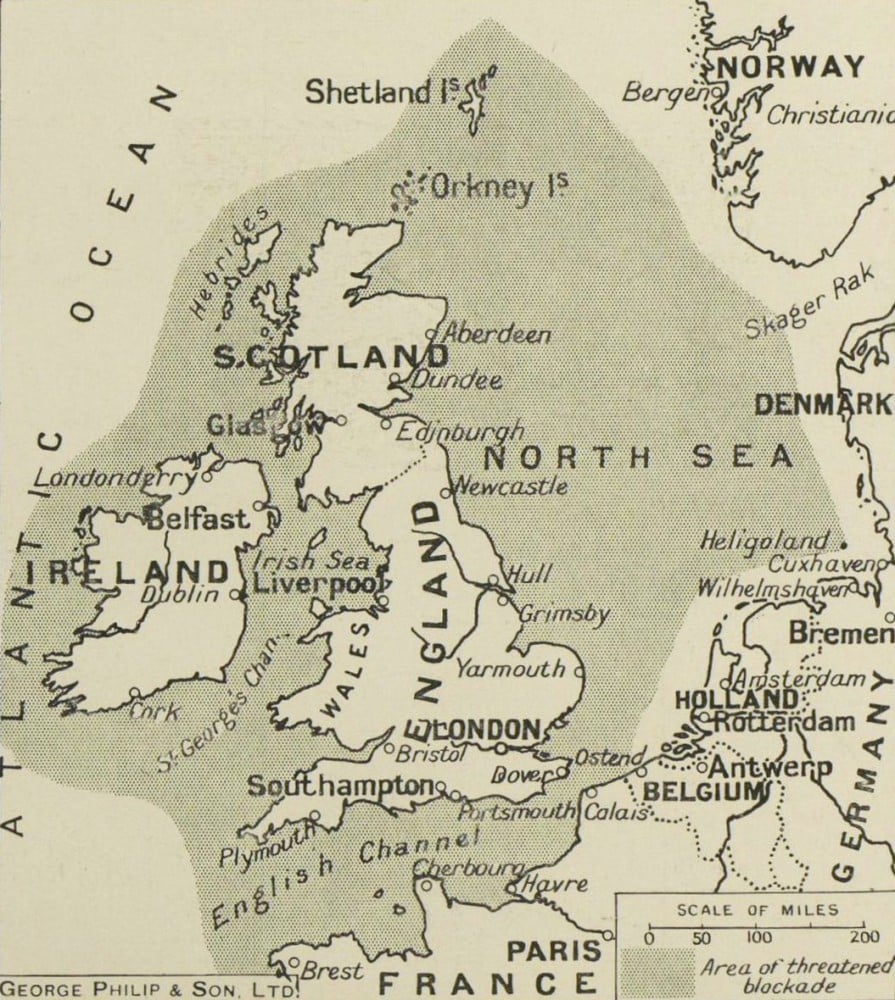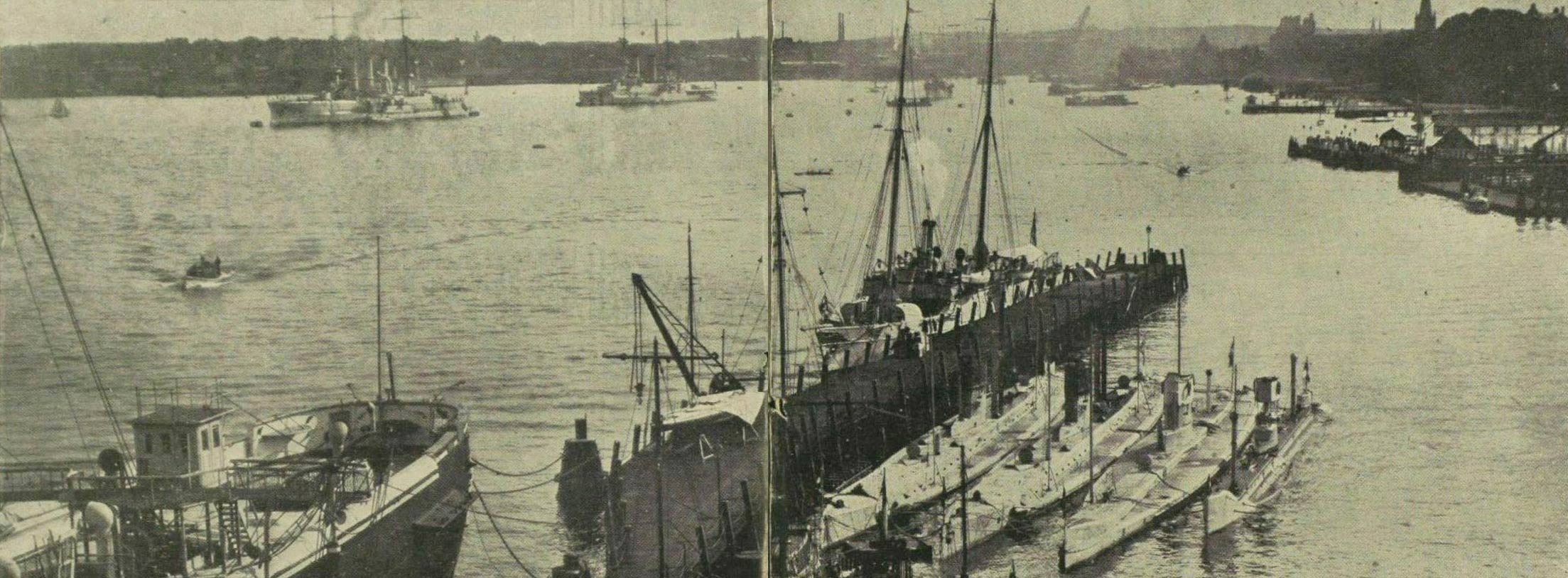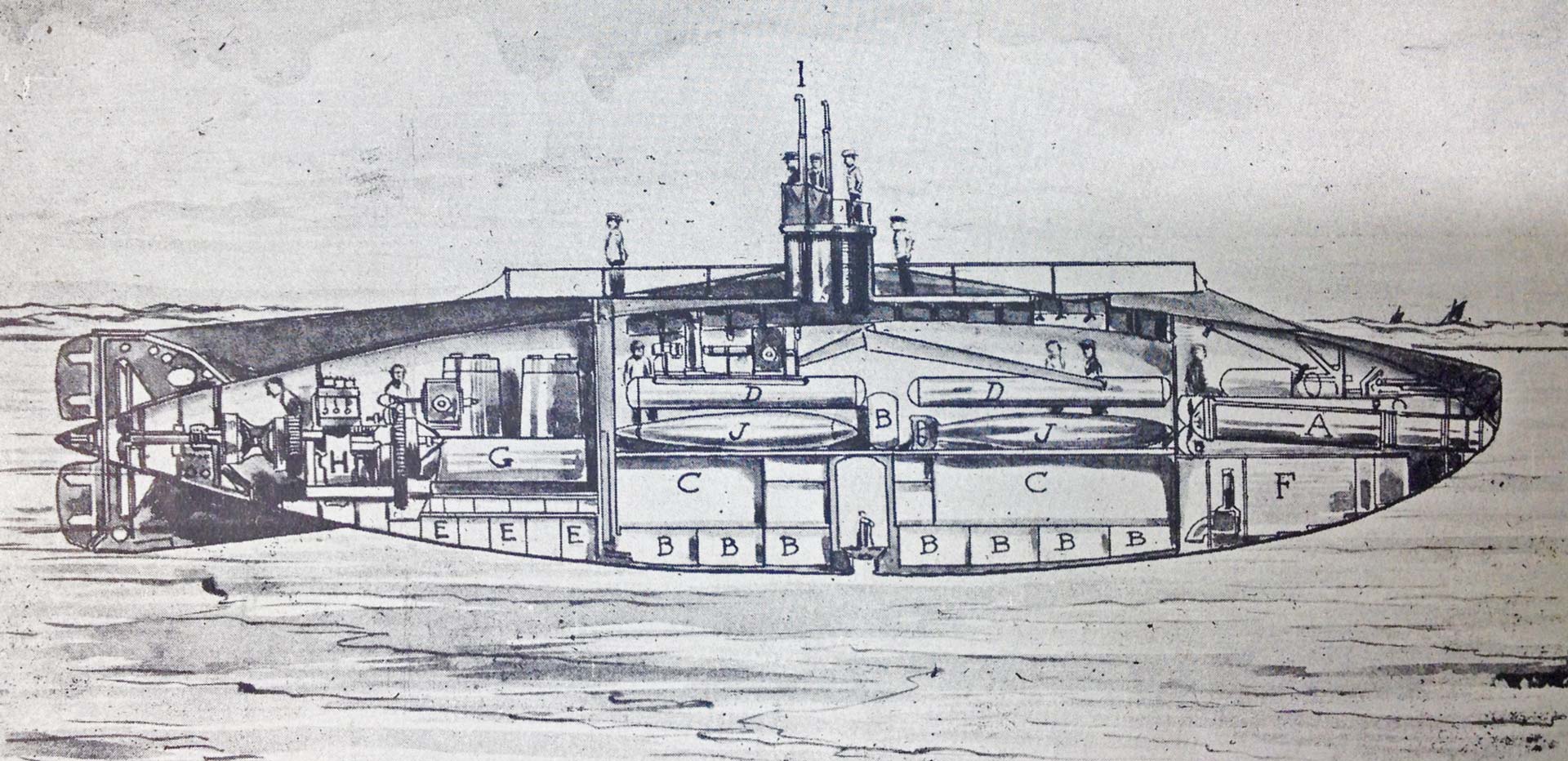Germany declares Irish Sea to be a ‘war zone’
Two ships sunk as part of German naval blockade
Dublin, 22 February 1915 - Germany's blockade of the British Isles has begun in earnest with the sinking of two ships in the Irish Sea.
The Irish steamer Downshire was sunk on Saturday evening, after the Welsh steamer Cambank had been sunk earlier that day.
The German Admiralty declared on 4 February that the waters surrounding Great Britain and Ireland was within the seat of war and that all enemy vessels found in these waters after 18 February would be destroyed. They further stated that the vessels will be destroyed ‘even if it is not always possible to avoid thereby the dangers which threaten crews and passengers’.

Map showing the area the Germans have threatened to blockade. (Image: Illustrated London News [London, England], 20 February 1915)
The Downshire and the Cambank
The Downshire was proceeding to Liverpool to collect a cargo of coal when it was intercepted by a German submarine.
Three shots were fired from a machine gun following a short chase in the sea and the crew were ordered to put out their lifeboats and get into them. Once the ship was cleared, submarine crew placed a bomb on the ship and sank it. Several members of the submarine crew expressed their distress at the ship being sunk, before ordering the crew of the Downshire to make for other trawlers that had come into view. Captain Connor and ten of the crew were picked up by a trawler and landed in Dundrum, Co. Down at midnight.
The crew of the Cambank were drowned, however, when their ship was sunk without warning off the coast of Wales.

Four German submarines line up at a dock. It is with these vessels, and others like them, that the German Admiralty hope to enforce their blockade of the Britain and Ireland. (Image: Illustrated London News [London, England], 20 Feb 1915]
International reaction
In a note to the German government, the United States is understood to have acknowledged that submarine activities are not entirely covered by international law, but that it would view any attack on an American ship would be ‘a grave matter, and will result in serious complications’.
For their part, the Germans have set out their willingness to abandon the blockade provided there is a stop put to what is described as ‘Great Britain’s violation of international law’ in attempting to starve the non-combatant population of Germany.
Germany has also alleged that British ships are using neutral flags to disguise their passage.
[Editor's note: This is an article from Century Ireland, a fortnightly online newspaper, written from the perspective of a journalist 100 years ago, based on news reports of the time.]





















